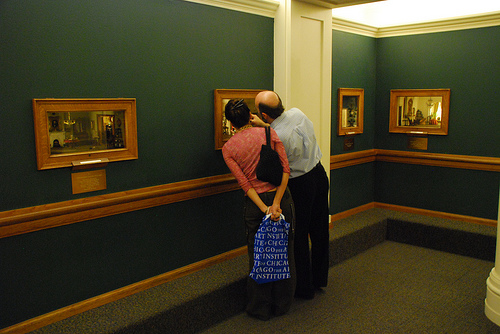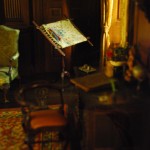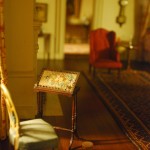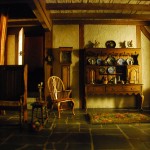The Art Institute of Chicago houses a unique collection of meticulously fabricated miniature rooms, the so-called Thorne Miniature Rooms, to depict period interior spaces from the 18th, 19th and early 20th Centuries in the US, Europe, China and Japan. The 68 models a remarkably detailed at the scale of one inch to one foot (or one-twelfth scale), including printed pages in each minute book and working musical instruments. The lilliputian rooms stand out in the city of big shoulders, not only for their size but because they only depict domestic, traditionally feminine spaces, namely kitchens, living rooms and bedrooms, and are filled with cues of the woman’s place in these societies. Most rooms feature a pace for sewing, writing letter, or cooking; almost all contain furniture for receiving groups of people, as well as children’s toys scattered about, but none contains any tools which may have been associated with manual labor, industry and the male place. The Thorne rooms stand as a micro-monuments to domesticity, a striking counterpoint to Chicago’s contribution to our modern monumental vocabulary: the skyscraper, towering emblem of commerce and industry and anything but domestic or feminine in form or function.
holes in the wall
This entry was posted in architecture, art, possessed products. Bookmark the permalink. Both comments and trackbacks are currently closed.






